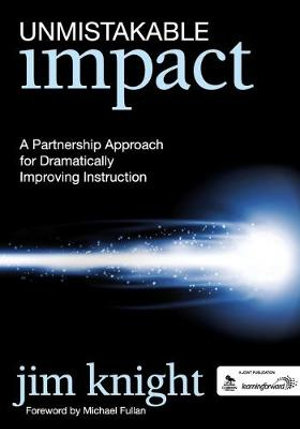
I’ve just finished the penultimate chapter of Jim Knight’s Unmistakable Impact as part of a book study with other district leaders. Below are my thoughts on the chapter, “Intensive Learning Teams.”
It’s not that I don’t appreciate Knight’s thinking throughout this book, it’s that a better title might have been, Put Some Structure in Your Schools.
Each chapter thus far has been filled with interesting and helpful information gussied up in terms like Chapter 6’s “intensive learning teams.” I don’t deny the effectiveness of getting a group of people together to build curriculum, courses, or even schools. I do worry that some of Knight’s branding might get in the way of doing the work or readers feeling as though they can step out of bounds of the processes he describes in order to do what is best for their schools or districts.
Ch. 6 is built around Peter Senge‘s assertion that, “on average [a group] will consistently come up with a better answer than any individual could provide.”
Knight proceeds to pull together his own work and the work of others to build the case and the process for creating effective group work. In describing Intensive Learning Teams (ILTs) specifically, “ILTs bring together groups of teachers from across a district for short, intensive collaborative meetings to refine or reinvent the course or grade that they share responsibility for teaching.”
From there, he outlines how each of the “partnership principles” from earlier in the book can be embodied in the practice of ILTs. Again, this has happened throughout each chapter of the book. While I appreciate the parallel structure and the transparency of values, I found myself wishing Knight would highlight the core principles most involved in the content of this chapter. Giving each equal weight throughout has been a bit difficult.
For the content of the chapter, I found myself wishing Knight would point to George Lakey’s Facilitating Group Learning. Knight’s focus was largely on making things as easy as possible and reducing the friction of a team as they went through their work.
In practice, the work is more complex. At least it should be. Lakey devotes an entire chapter to “Diversity and Conflict Styles,” alerting his readers to the need to lean in to the conflict and embrace the struggle of finding common ground. Knight not only ignores conflict, he architects ways to avoid it.
Lakey writes:
And yet the trainers’ intuition back in the day, that conflict is necessary, is correct. In direct education our alternative to inciting conflict is using activities and interventions to elicit the conflicts present in the group.
Granted, Lakey is writing largely about diversity work, and I’d argue that all education work is diversity work. Often, we search for the team meeting protocol, the agenda structure or the facilitation style that avoids contentious issues as much as possible. If we do this, if we steer clear of friction as often as possible, we’ll be ignoring the important work of building a community of education as often as possible as well.
Perhaps this is my greatest qualm with Knight’s work. While I agree with much of what he offers in the way of structures, I worry that this text is the 101 version of doing the work, and leaves those who follow its suggestions unprepared or willfully ignorant of the conversations we’ve been ignoring for generations – class, race, culture, gender, sexuality, location, etc.


